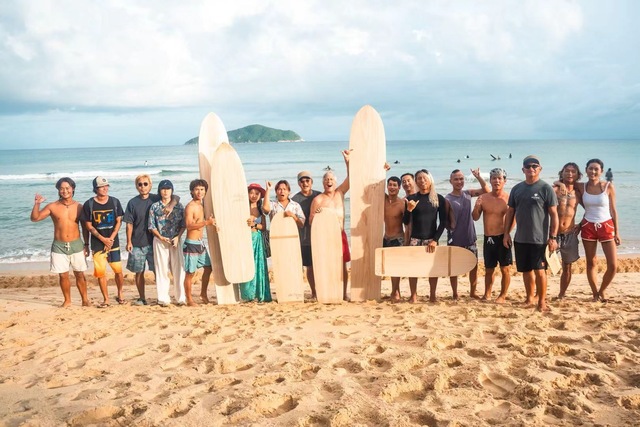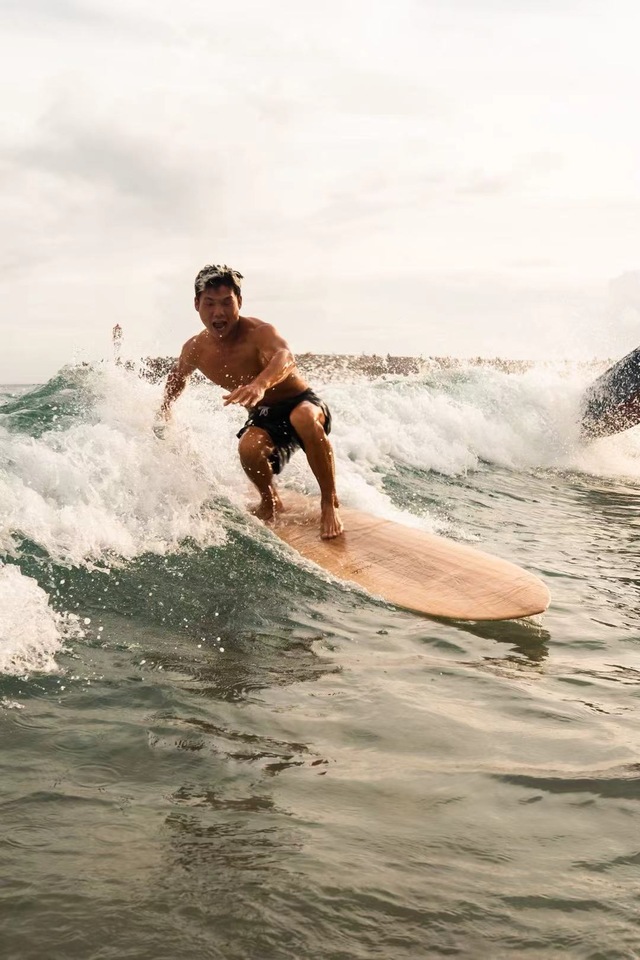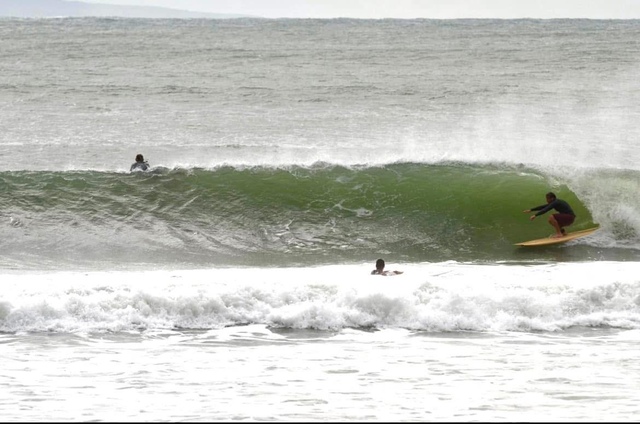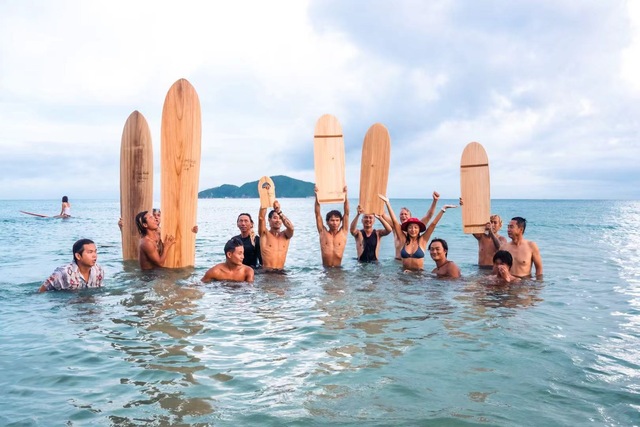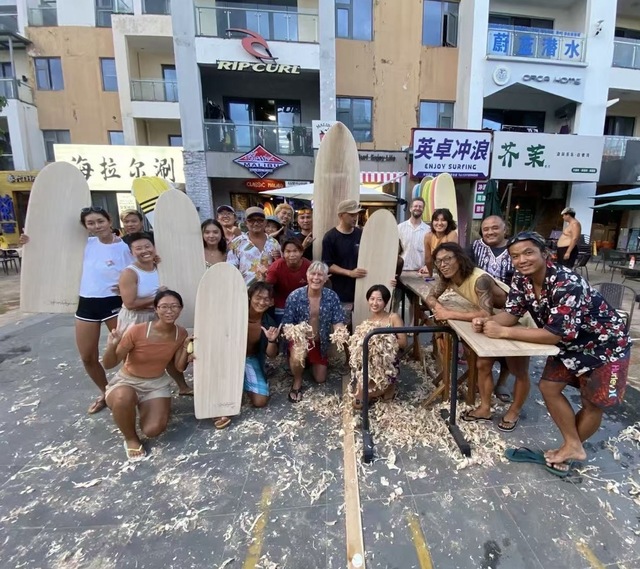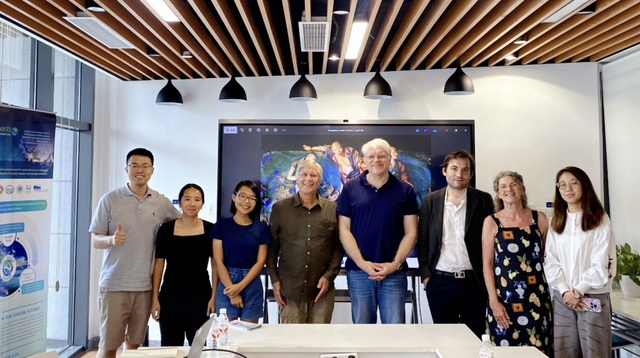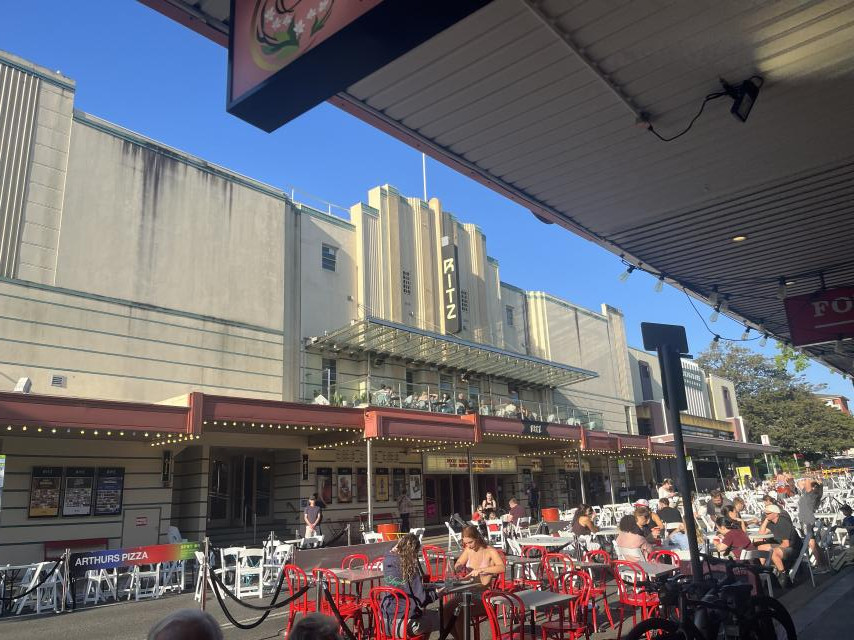There are many things to like about Tom Wegener, but for me, near the top of the list is the contagion of enthusiasm he lets loose on a room when he is truly, deeply, madly excited about an idea.
Such was the case when the councillor, doctor of philosophy, surfboard artisan and surfer, and wife Margie recently returned from China, where the Wegeners were not only feted by the fast-growing surf cultural community on Hainan Island and elsewhere on the mainland, but were given the opportunity to promote their ideas on surfing, surfboards and sustainability to more than 4000 delegates from 150-plus countries at the World Congress of Biosphere Reserves in Hangzhou.
The Wegeners rounded out their Chinese research mission by visiting China’s biggest paulownia wood manufacturing facility in a remote part of the country and then presenting a keynote address at the Future Earth Coasts seminar, Surf Culture: Collectively Supporting Coastal Futures. Wow, did they have a lot to tell us when they popped around for a drink!
The FEC event brought together researchers and coastal advocates to explore how the global surfing community contributes to conservation, cultural resilience, and sustainable futures. This from the FEC news feed after the seminar: “Dr Tom Wegener delivered a keynote highlighting surfing as a cultural movement rooted in coastal and ocean stewardship. Drawing on his PhD research and decades of experience, he showcased the resilience of surf culture—from ancient Hawaiian alaia boards to local surfboard-making traditions—and the role of surfers as frontline witnesses to coastal pollution and advocates for change.
“The session also explored surfing’s link to governance and policy, including integrating surf breaks into coastal legislation, balancing tourism with environmental protection, and using surfing reserves for conservation and sustainable development. Global case studies—from Papua New Guinea to the Maldives and West Africa – demonstrated how surfing initiatives can advance equity, cultural preservation, and environmental justice, highlighting the sport’s wider impact on society and ecosystems.”
In Tom’s words: “The surfing community is a very strong ally of those interested in protecting coastal communities. There is a common culture which embraces clean water, clean beaches, a sense of place, an understanding of the problems of overcrowding and unsustainability, and an appreciation and support of local manufacturing, particularly in the case of surfboards.”
Tom reflected on the surprising revelation that local surfboard manufacturing was thriving in Hainan.
“We often think of China as the land of mass production, but we met all of these bespoke surfboard builders operating there and doing very well. We also discovered that the surf community was very environmentally active. They’d started a group called Don’t Throw, they have massive beach cleanups and they take tiny plastic from the sea recycle it into surf trinkets. We had wood delivered to the Classic Malibu shop [Peter White’s Noosa-based Classic Malibu has been a pioneer in Chinese surfboard manufacture and retail] and we put on a wood surfboard day, showing people what wood boards looked like, how they surfed and so on. I had no idea how many people would come but the street was packed. And they all wanted to know everything!”
At the World Congress of Biosphere Reserves, convened by UNESCO only once every decade, Tom and Margie had the opportunity to discuss the many links between surf culture and sustainability with delegates from places where surf travel is already strongly established, like The Maldives and Papua New Guinea, or becoming so, like West Africa.
Where’s it all going? According to the WCBR’s endnote: “By fostering dynamic networks and global collaboration, the fifth WCBR will reinforce biosphere reserves as global models for biodiversity conservation, climate resilience, and sustainable livelihoods and pioneering hubs for conservation science, community-led innovation, and scalable solutions—guiding humanity toward a more harmonious relationship with nature.”
One thing is for sure: the Wegeners came home bubbling over with exciting ideas about sustainability in surfing. Watch this space.
A very Walshie affair
As soon as I got out of the Uber and turned the corner into St Paul St, closed off to traffic and the road filled with Parisian café tables as far as the eye could see, my first thought was, Walshie would have loved this!
Two years after the untimely death of Foxtel creative guru Brian Walsh, I was in Sydney last week for the world premiere of The Great Entertainer, a beautifully done feature documentary celebrating the life and storied career of a little bloke who made big things happen. Always flamboyant, how he would have loved to sashay down the red carpet between the tables and into the foyer of the gloriously-restored Randwick Ritz, to be greeted by hundreds of his colleagues and the big stars whose careers he nurtured.
The doco does him proud, covering many of the seminal moments in his career, like bringing Tina Turner in as an NRL ambassador and changing the future of the game with the Simply The Best campaign.
One that ended up on the cutting room floor but will always have a place in my memory is the day we had a good lunch at Sails, and after the second bottle of wine, as I excused myself, I dropped a single page pitch for a doco I called Men Of Wood and Foam on the table and said, take a look at this, mate.
When I got back from the bathroom three minutes later, Walshie said: “Mate, I love it, it’s got such heart. We’re in 100 per cent.”
And they were. And a year later he hired Little Pattie to do a guest spot at the world premiere, so we could be Stompin’ at Maroubra under the moonlight. Classic Walshie.
The Great Entertainer is now streaming on Foxtel and Binge.

